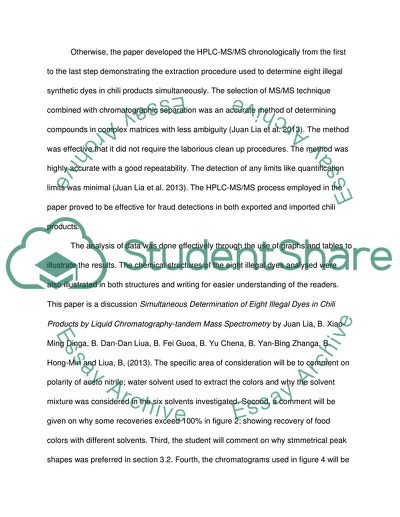Cite this document
(“Simultaneous determination of eight illegal dyes in chili products by Coursework”, n.d.)
Simultaneous determination of eight illegal dyes in chili products by Coursework. Retrieved from https://studentshare.org/health-sciences-medicine/1629878-simultaneous-determination-of-eight-illegal-dyes-in-chili-products-by-liquid-chromatography-tandem-mass-spectrometry
Simultaneous determination of eight illegal dyes in chili products by Coursework. Retrieved from https://studentshare.org/health-sciences-medicine/1629878-simultaneous-determination-of-eight-illegal-dyes-in-chili-products-by-liquid-chromatography-tandem-mass-spectrometry
(Simultaneous Determination of Eight Illegal Dyes in Chili Products by Coursework)
Simultaneous Determination of Eight Illegal Dyes in Chili Products by Coursework. https://studentshare.org/health-sciences-medicine/1629878-simultaneous-determination-of-eight-illegal-dyes-in-chili-products-by-liquid-chromatography-tandem-mass-spectrometry.
Simultaneous Determination of Eight Illegal Dyes in Chili Products by Coursework. https://studentshare.org/health-sciences-medicine/1629878-simultaneous-determination-of-eight-illegal-dyes-in-chili-products-by-liquid-chromatography-tandem-mass-spectrometry.
“Simultaneous Determination of Eight Illegal Dyes in Chili Products by Coursework”, n.d. https://studentshare.org/health-sciences-medicine/1629878-simultaneous-determination-of-eight-illegal-dyes-in-chili-products-by-liquid-chromatography-tandem-mass-spectrometry.


